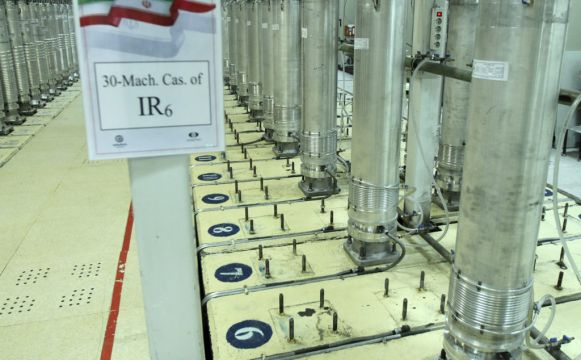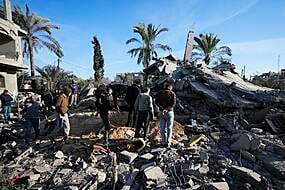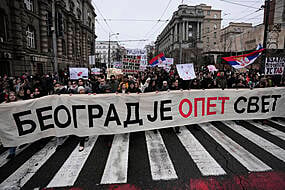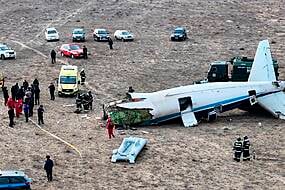Iran has blamed Israel for a sabotage attack on its underground Natanz nuclear facility that damaged its centrifuges.
The incident imperils ongoing talks over its tattered nuclear deal and brings a shadow war between the two countries into the light.
Israel has not claimed responsibility for the attack.
It rarely does for operations carried out by its secret military units or its Mossad intelligence agency.
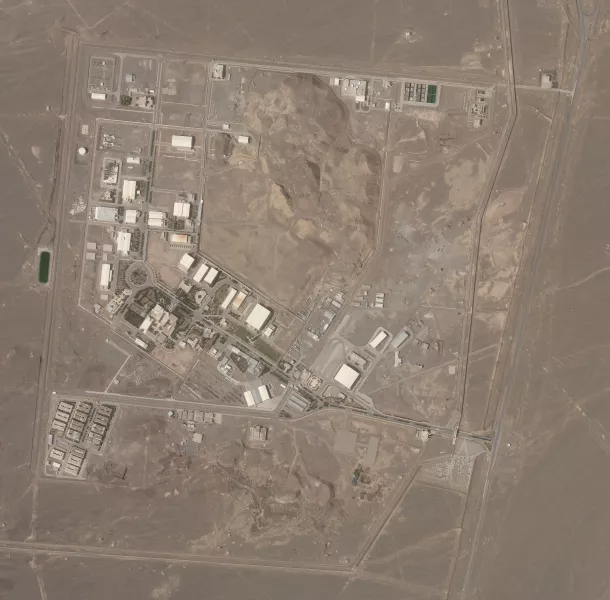
However, Israeli media widely reported that the country had orchestrated a devastating cyberattack that caused a blackout at the nuclear facility.
Meanwhile, a former Iranian official said the attack set off a fire.
The incident further strains relations between the US, which under President Joe Biden is now negotiating in Vienna to re-enter the nuclear accord, and Israel, whose Prime Minister Benjamin Netanyahu has vowed to stop the deal at all costs.
Mr Netanyahu met on Monday with US defence secretary Lloyd Austin, whose arrival in Israel coincided with the first word of the attack.
At a news conference at Israel’s Nevatim air base on Monday, where he viewed Israeli air and missile defence systems and its F-35 combat aircraft, Mr Austin declined to say whether the Natanz attack could impede the Biden administration’s efforts to re-engage with Iran on its nuclear programme.
“Those efforts will continue,” Mr Austin said.
The previous American administration under Donald Trump had pulled out of the nuclear deal with world powers, leading Iran to begin abandoning its limits.
Details remained scarce about what happened early on Sunday at the facility.
The event was initially described only as a blackout in the electrical grid feeding its above-ground workshops and underground enrichment halls – but later Iranian officials began referring to it as an attack.
A former chief of Iran’s paramilitary Revolutionary Guard said the attack had also set off a fire at the site and called for improvements in security.
In a tweet, General Mohsen Rezaei said the second attack at Natanz in a year signalled “the seriousness of the infiltration phenomenon”.
Gen Rezaei did not say where he got his information.
“The answer for Natanz is to take revenge against Israel,” Iran Foreign Ministry spokesman Saeed Khatibzadeh said.
“Israel will receive its answer through its own path.”
Mr Khatibzadeh acknowledged that IR-1 centrifuges, the first-generation workhorse of Iran’s uranium enrichment, had been damaged in the attack, but did not elaborate.
State television has yet to show images from the facility.
However, the facility seemed to be in such disarray that, following the attack, a prominent nuclear spokesman, Behrouz Kamalvandi, walking above ground at the site fell seven metres (23ft) through an open ventilation shaft covered by aluminium debris, breaking both his legs and hurting his head.
Iranian foreign minister Mohammad Javad Zarif warned Natanz would be reconstructed with more advanced machines.
That would allow Iran to more quickly enrich uranium, complicating the nuclear talks.

“The Zionists wanted to take revenge against the Iranian people for their success on the path of lifting sanctions,” Iran’s state-run IRNA news agency quoted Mr Zarif as saying.
“But we do not allow (it), and we will take revenge for this action against the Zionists.”
Officials launched an effort on Monday to provide emergency power to Natanz, said Ali Akbar Salehi, the head of Iran’s civilian nuclear programme.
He said the sabotage had not stopped enrichment there, without elaborating.
The IAEA, the United Nations body that monitors Tehran’s atomic programme, earlier said it was aware of media reports about the blackout at Natanz and had spoken with Iranian officials about it.
The agency did not elaborate.
Natanz has been targeted by sabotage in the past.
The Stuxnet computer virus, discovered in 2010 and widely believed to be a joint US-Israeli creation, once disrupted and destroyed Iranian centrifuges there during an earlier period of Western fears about Tehran’s programme.
In July, Natanz suffered a mysterious explosion at its advanced centrifuge assembly plant that authorities later described as sabotage.
Iran is now rebuilding that facility deep inside a nearby mountain.
Iran also blamed Israel for that, as well as the November killing of a scientist who began the country’s military nuclear programme decades earlier.
